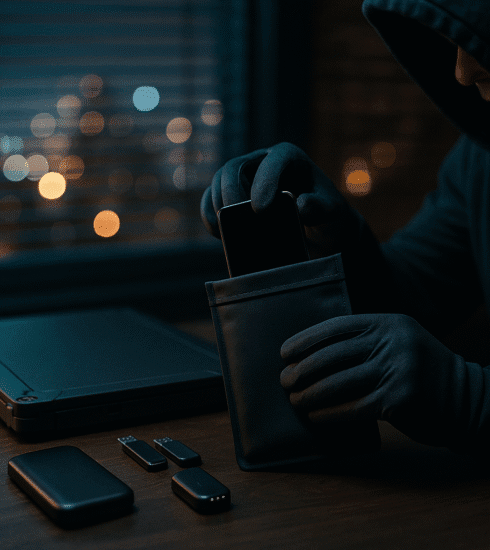SIM Swap Attack And How To Avoid It
Your phone number is not proof of who you are. It is a route that can be redirected by a stranger with a story. I have watched quiet takeovers begin with a calm voice and a tired clerk. The fix is not glamorous. It is small moves that remove easy paths and force checks. This is how you harden your day against a sim swap attack.
Your number is a route, not proof. Break easy routes. Add friction on every change and you cut most of the loss.
Phone identity is a fragile proxy
Most services still trust a phone prompt as proof that the right person is in control. That trust is a shortcut that trades rigor for speed. It works during calm days and fails during stress. I learned to treat the phone as a signal only, not as a key.
Carriers run large support teams with scripts and targets. A caller who sounds rushed can push a change through if the agent feels time pressure. The system is built for volume, not assurance. That reality shapes every decision you make about recovery flows.
I keep the model simple when I brief a client. Identity rests on what you know, what you have, and what you are. A phone number sits off to the side as a routing aid. The more you lean on it, the easier you make life for an impostor.
How impostors bend carriers
I have listened to recordings where an attacker plays lost, polite, and urgent in the same breath and the move lands before a supervisor notices. The shift is quiet and fast, and by the time you see no bars the reroute is already in place. That is the first beat in a sim swap attack, and it often begins with small public facts stacked into a convincing story. The person on the other end of the line wants to help and wants to move the queue, and that is all the leverage the impostor needs.
Defenses exist but they only work when staff follow them. Account pins, port freezes, and notes that demand in person proof can hold the door. They must be added by you and then verified through tests. I ask the client to call back later and confirm that staff can see the rules and repeat them.
Pressure is the blade that cuts controls. A flight is boarding, a child is sick, a boss is waiting, and a signal drops. These cues make an agent move faster. Your plan must assume that pressure will be present on the day you need the system to resist a lie.
Freeze the port. Require in person proof. Test it later with a call and ask staff to read back the rule.
Build factors that do not ride SMS
Text codes are easy but fragile. I replace them with app prompts and hardware keys for email, bank, broker, admin consoles, and the password vault. These factors live on devices and use secrets that do not travel over voice lines. A call center cannot move them with a story.
Redundancy prevents lockouts when gear fails or goes missing. Keep two hardware keys and store one away from home. Print recovery codes for a few core services and place them in a sealed envelope. This keeps you in control during a bad day with no phone.
Some teams try to split the path and keep text codes for convenience. That is not a plan. That is drift. Attackers love drift because it creates one weak link in a chain of strong parts.
Containment when the line goes dark
Most people feel panic when a device drops from the network at a strange time. I want a calm script that you can run from a second device. Contact the carrier fraud team at once, request a reverse port, and place a block on all changes. Ask for a case number and a copy of the account notes that show who approved the move.
Move next through your crown jewels in order. Regain control of email, then the password vault, then banks and brokers, then cloud storage. Change the primary email password from a device you trust and log out all sessions. In your notes avoid dramatic labels and state the simple fact that the line moved without consent to keep the focus on action, not debate about a sim swap attack.
After control returns, file reports with your bank and with local law enforcement and with your telecom regulator. These anchors help with disputes and with credit events. They also push the carrier to add friction on your account. In a past case I asked for a voice print and it stopped a second attempt.
Finance and cloud choke points
Banks decide outcomes when money starts to move. Replace text codes with app prompts or hardware keys wherever the platform allows it. Set alerts for every transfer and for every new payee. Set daily transfer limits that match real life and keep them low by default.
Your email account is both target and lever. It recovers other services and holds your life history. Use a long password that you never type on shared devices and add a hardware key. Print backup codes and keep them off network.
Keep one clean address only for recovery and billing. Do not publish it and never forward it. When support asks for a contact address, do not give this one unless you placed the call. That address is your last clean door during a bad day.
Carrier hardening that survives stress
Call your carrier and add a unique account pin known only to you and one trusted person. Ask for a port freeze and a note that blocks changes by phone. Require in person visits with identification for any move. Then test it with a follow up call and make the agent read your rules back to you.
Create a second number for critical resets and keep it private. Do not use it for casual sign ups or public profiles. Treat it like a vault key. If your main line is ever in play, the private line lets you regain control fast.
Voice over internet lines can work for travel and privacy if you lock the account with a long random password and app based factors. Support can still move routes if policy allows it. Test the freeze and ask staff to explain how they would verify a change request. Your goal is not comfort, it is assurance that holds when a person on a headset is in a rush.
Keep one rule close. Your phone number is a route, not proof. Build proof on factors a stranger cannot move by talking fast. Make every change slow, logged, and checked.





